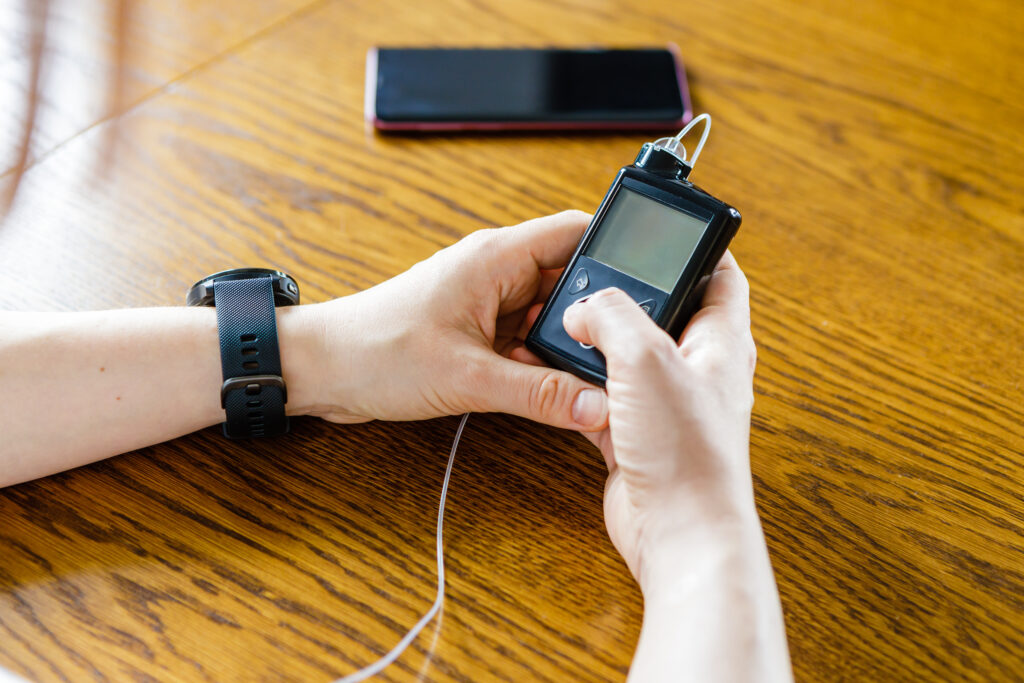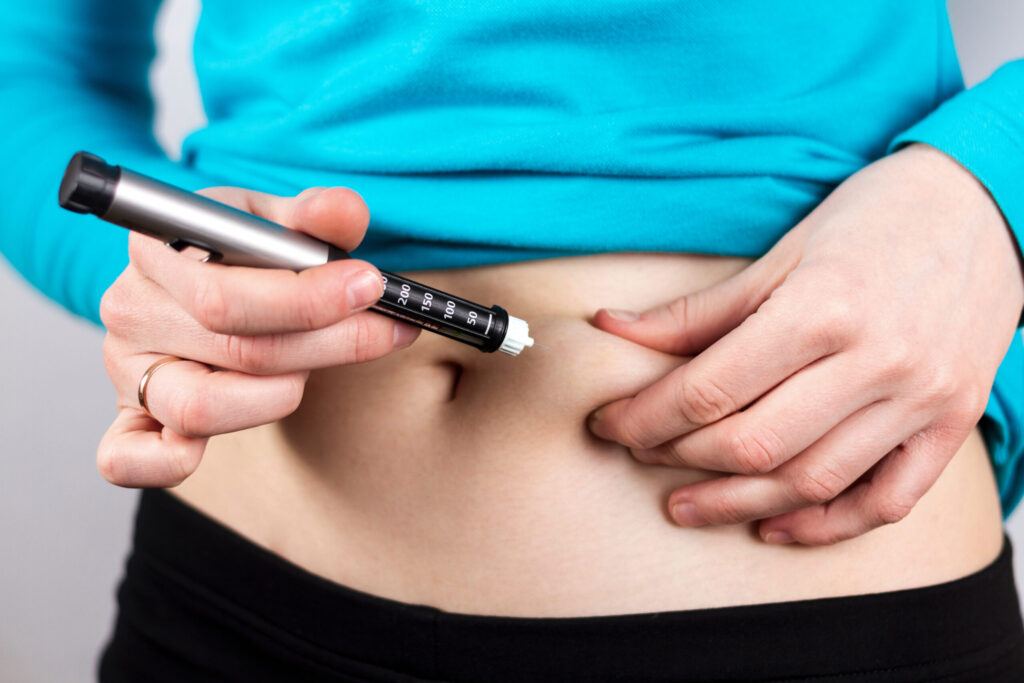

The Insulin Sensitivity Factor (ISF), sometimes also called the Correction Factor, reflects the influence a unit of insulin has in your body. The ISF specifies how much 1 unit of rapid-acting insulin may drop your blood glucose level (BGL).
ISF can be used if you are on an insulin pump, or if you take Multiple Daily Injections (MDI) in the form of a basal-bolus insulin regimen (once or twice daily long-acting insulin and rapid-acting insulin before (main) meals). Let’s first look at calculating the ISF using MDI.
How is the ISF calculated?
One way of calculating the ISF is by using the scientifically evidenced ‘100-rule’.
First you need to calculate your Total Daily Dosage (TDD) by adding up both the rapid-acting (bolus or pre-meal insulin) and long-acting (basal or background) insulin doses in a 24-hour period. It will be more accurate if you calculate the TDD over a few days and take the average.
Then you take the number 100 and divide it by your current TDD to calculate the ISF.
For example: If you take 55 units of Optisulin at night and 8 units of Novorapid at breakfast, 6 units at lunch and 7 units at dinner your TDD will be:
55 + 8 + 6 + 7 = 76 units/day
100 : 76 = 1.3
This means that you will need 1.3 units insulin of rapid-acting to drop your BGL 1 mmol/L. In other words, your ISF is 1.3.
How do I use the ISF?
You can use the ISF to get back to target if your BGL is too high or too low through the following formula: current BGL – target BGL divided by ISF. Generally, the ISF is added to the insulin-to-carbohydrate ratio (ICR) at meal times and is based on the pre-meal BGL.
For example: If your BGL is 17.2 mmol/L and you have an ISF of 1:3 and a target BGL of 6.0 mmol/L it would mean that you would need around 8 units of rapid-acting insulin to get your BGL back to target:
17.2 – 6.0 = 11.2 and 11.2 : 1.3 = 8.6
To reduce the risk of hypoglycaemia (low blood glucose levels) it is recommended to round off downwards to the next nearest whole number, so in this case 8 rather than 9 units (or 8.5 if your pen device can deliver insulin in half unit increments).
If you are using a BG target range (for example BG target of 4.5-7.5 mmol/L) instead of a hard target of 6.0 mmol/L as in the example above) it is recommended to aim to decrease high BGLs using the ISF to the upper limit of the range (in this example: 7.5 mmol/L).
17.2 – 7.5 = 9.7 and 9.7 : 1.3 = 7.5, so you would take 7 units to correct.
BGLs below the target can be corrected using the ISF also, but in this case the insulin amount would be deducted. For example: if your BGL is 3.5 and your target BGL is 6.0 you would first treat the hypo with some quick-acting carbohydrate and would decrease your pre-meal bolus:
3.5 – 6.0 = -2.5 and -2.5 : 1.3 = -1.9, so you would decrease your pre-meal bolus by 2 units.
How do I know if my ISF is correct?
You should check your BGLs 2-3 hours after taking a correction bolus (or check your continuous or flash glucose monitoring data at those times) to check if your correction factor is right. If your BGL is to target then you know the ISF (and your carbohydrate counting and insulin to carbohydrate ratio or ICR) are correct.
If your BGL remains above target or you experience a low BGL 2-3 hours after that meal then the correction factor may need to be adjusted. Your endocrinologist or credentialled diabetes educator can help you with this.
Insulin resistance
Insulin resistance means that the insulin in your body does not work all that well, in other words, you are less sensitive to insulin and will need larger amounts of insulin to correct for high blood glucose levels. This means that you will have a lower ISF number, for example an ISF of 1.0 rather than 1:3 in our example above.
Insulin Resistance is increased by stress and weight gain. This means that you may need more insulin during these times and your ISF may need to be adjusted. In contrast, physical activity (in particular resistance training) will make you more sensitive to insulin and may increase your ISF during as well as after exercise. Always follow the advice of your healthcare professional if you are planning on making any insulin dose adjustments.
Check the basal first
Before calculating or changing the ISF it is important to check if your basal/background insulin (Toujeo, Optisulin or Levemir) dose is correct. You can do this by comparing your pre-bed BGL with your fasting BGL. If your FBGL is often more than 4mmol higher or lower than the night before you may need to change your basal insulin dose by 1-2 units (follow the directions of your diabetes HCP).
Whenever the basal insulin dosage is changed it is advisable to give it at least 3 days to see the new pattern before making any further changes.
ISF and insulin pumps
Insulin pumps have an algorithm in them that can calculate the amount of bolus insulin needed based on your current BGL, your carbohydrate intake, your target BGL, your ISF, your ICR, and any insulin left on board (IOB). Talk to your healthcare professional if you think changes to this algorithm are needed.
A few words of caution
You should avoid taking extra injections, outside your pre-meal boluses, as this may lead to something called insulin stacking and can increase your risk of developing (severe) hypoglycaemia.
Calculating and using ISF only works if you are on a basal-bolus insulin regimen. It does not work if you are using pre-mixed insulins such as Humalog Mix25 or Mix50, Novomix, or Ryzodeg. If you are using a pre-mixed insulin talk to your healthcare professional for advice on insulin dose adjustments.
The above information is to be used as a guide only. Always follow the recommendations of your healthcare professional.

